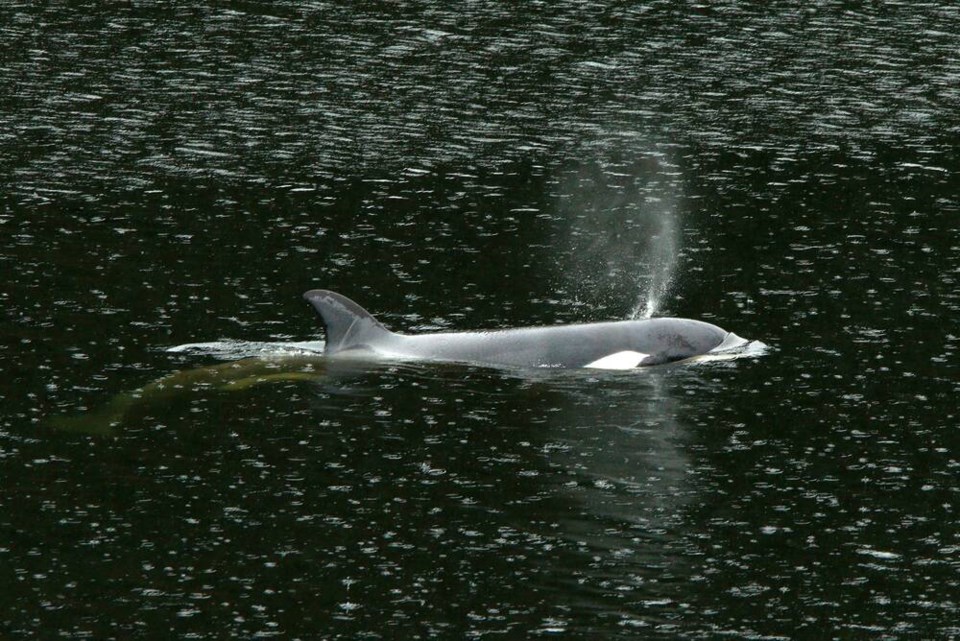First Nations in the Zeballos area are concerned about the increasing number of boaters interacting with the young orca that recently swam free from a lagoon where it was trapped for more than a month.
Ehattesaht/Chinehkint Chief Simon John said the worry is the orca will become habituated to boats, particularly after the First Nation and Fisheries and Oceans Canada had to feed it seal meat to improve its health while it languished inside the lagoon for 34 days.
“One of the lessons we think everyone is learning is young orcas are proving to be highly adaptable and impressionable,” said John.
“Everyone was very worried about her starving. When she first took the seal meat offered to her there was a mixture of relief that she wouldn’t starve, but also worry that she would be associating boats with food.”
John said from the start, the nation has been concerned about the orca calf “being habituated and this factored heavily into all planning.”
He said the most important thing now is that the orphaned orca be left alone as it awaits calls from family members that may be swimming near the area.
“No matter how interesting or connected we may feel, being with humans is exactly the wrong thing” for the calf, he said.
The Ehattesaht and DFO’s Marine Mammal Response Unit will be increasing patrols in the area by boat, drone and helicopter to prevent contact with the calf by boaters.
The nation is asking anyone travelling through the area to change course to avoid the orca. “Do not stop to watch her. Under no circumstances are you to engage with her,” said John.
At high tide on April 26, the young orca swam through a swift-moving, narrow channel and under a bridge, after more than a month of intense efforts to rescue the animal from the lagoon.
The orca had been trapped since its pregnant mother became stranded on a rocky bar and died near the bridge in Little Espinosa Inlet next to the community of Zeballos, more than 450 kilometres northwest of Victoria.
While in the lagoon, the young orca was observed eating herring, said Paul Cottrell, who led the rescue efforts for DFO.
John said when the orca was seen eating herring — something adult Bigg’s killer whales usually don’t do — rescuers were relieved because it meant the animal would not be dependent on being fed and “more likely than not she had learned to feed herself along the way.”
“We are very confident that she can survive out there on her own and we have even heard she is chasing sea otters,” said John. “We also know she is in the best possible location now. It’s a natural and known area — she can hear and be heard by her family as they pass by.”
John said the story of Luna, another young killer whale that showed up in nearby Nootka Sound, has been on his mind. Luna became attracted to boats and humans after spending five years in the area, rubbing boats and allowing human petting before it was killed by a tugboat propeller in 2006.
Bigg’s killer whales are listed as threatened under the Species at Risk Act. The rules require everyone to keep a 200-metre distance from killer whales.
“This would be the barest minimum that we would hope for to give [the orca calf] the best possible chance,” said John. “We have all worked so hard for her and we cannot let up now.
The .



